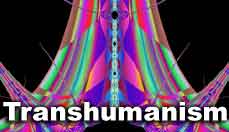Alex Linder Audio Books
Open Letters
Yggdrasil's Library
THE ORION PARTY
The Prometheus League
- Humanity Needs A World Government PDF
- Cosmos Theology Essay PDF
- Cosmos Theology Booklet PDF
- Europe Destiny Essays PDF
- Historical Parallels PDF
- Christianity Examined PDF
News Blogs
Euvolution
- Home Page
- Pierre Teilhard De Chardin
- Library of Eugenics
- Genetic Revolution News
- Science
- Philosophy
- Politics
- Nationalism
- Cosmic Heaven
- Eugenics
- Future Art Gallery
- NeoEugenics
- Contact Us
- About the Website
- Site Map
Transhumanism News
Partners




Indoctrination and Group Evolutionary Strategies: The Case of Judaism
by Kevin MacDonald in "Indoctrinability, Ideology, and Warfare: An
Evolutionary Perspective" edited by Eibl-Eibesfeldt and Frank Kemp Salter,
1998.
Indoctrination is a phenomenon that occurs within groups and, as a result,
raises fundamental evolutionary questions regarding the relationship between
the individual and the group. It has long been apparent to evolutionists that
highly cohesive, altruistic groups would outcompete concatenations of
individualists. The purpose of this chapter will be to develop the idea of a
group evolutionary strategy and to support the contention that
indoctrinability is an adaptation that facilitates the development of such
groups. With few exceptions, the data relevant to these theoretical interests
will be drawn from historical and contemporary Jewish communities.
For purposes of this chapter, a group is defined as a discrete set of
individuals that is identifiably separate from other individuals (who
themselves may or may not be members of groups). Groups become interesting to
an evolutionist when there are active attempts to segregate the group from the
surrounding peoples, a situation that results in what Erikson termed "cultural
pseudospeciation". Creating a group evolutionary strategy results in the
possibility of cultural group selection resulting from between-group
competition in which the groups are defined by culturally produced in-group
markings. Theoretically, group strategies are underdetermined and unnecessary.
A group evolutionary strategy may be conceived as an "experiment in living"
rather than the outcome of natural selection acting on human populations or
the result of ecological contingencies acting on universal human genetic
propensities.
In the case of Jews, in traditional societies there was a wide range of
actively sought marks of separateness from surrounding peoples. Factors
facilitating separation of Jews and Gentiles have included religious practice
and beliefs; distinctive languages, such as Yiddish, Hebrew, and Ladino;
mannerisms (e.g., gestures); physical appearance (hair styles) and clothing;
customs (especially the dietary laws); occupations that were dominated by the
group; and living in physically separated areas that were administered by Jews
according to Jewish civil and criminal law. All of these practices can be
found at early stages of the diaspora, and in the ancient world there were a
large number of prohibitions that directly limited social contacts between
Jews and Gentiles, such as the ban on drinking wine touched by Gentiles or the
undesirability of bantering with Gentiles on the day of a pagan festival in
the Greco-Roman world of antiquity. Perhaps the most basic badges of group
membership and separateness, appearing in the Pentateuch, are circumcision and
the practice of the Sabbath.
Given this actively sought separation, there is the possibility that there
will be genetic differences between Jewish and Gentile populations that are
maintained over long stretches of historical time. There is considerable
evidence for gene frequency differences between Jewish populations and
populations they have lived among for centuries. Moreover, there is little
doubt that over long stretches of historical time there was little genetic
admixture, due to the functioning of the segregative mechanisms described
previously but also due to negative attitudes regarding intermarriage and
proselytism.
A dispersed group that actively maintains genetic and cultural segregation
from surrounding societies must develop methods to ensure social cohesion and
prevent defection. Fundamental to Jewish group integrity over historical time
have been social controls and ideologies that depend ultimately on human
abilities to monitor and enforce group goals, to create ideological structures
that rationalize group aims both to group members and to outsiders, and to
indoctrinate group members to identify with the group and its aims.
Social controls on group members are central to group evolutionary
strategies. Social controls can range from subtle effects of group pressure on
modes of dressing to laws or social practices that result in large penalties
to violators. Recently Robert Boyd and Peter Richerson have shown that
punishment can result in the stability of altruism or any other group
attribute. In the case of human groups, punishment that effectively promotes
altruism and inhibits nonconformity to group goals can be effectively carried
out as the result of culturally invented social controls on the behavior of
group members. Thus, while it may well be that group-level evolution is
relatively uncommon among animals due to their limited abilities to prevent
cheating, human groups are able to regulate themselves via social controls so
that theoretical possibilities regarding invasion by selfish types from
surrounding human groups or from within can be eliminated or substantially
reduced.
Facilitating altruism by punishing nonaltruists can be viewed as a special
case of the general principle that social controls can act to promote group
interests that are in opposition to individual self-interest. Group strategies
must typically defend themselves against "cheaters" who benefit from group
membership but fail to conform to group goals. Human societies are able to
institute a wide range of social controls that effectively channel individual
behavior, punish potential cheaters and defectors, and coerce individuals to
be altruistic.
Besides social controls, group strategies also are typically characterized
by elaborate ideological structures that rationalize group goals and behavior
within the group and to out-group members. By far the most important form of
such ideology in human history is what we term religion, and in the following
it will be apparent that indoctrination into Judaism as a group evolutionary
strategy involved the inculcation of religious beliefs that rationalized
behavior essential to the group strategy.
Indoctrination into the Group Ethic of Judaism
Judaism has been able to retain a high level of group cohesion and
within-group altruism over a long period of historical time, at least partly
because of social controls acting within the group that served to penalize
nonaltruists and noncooperators, while cooperative altruists were ensured a
high level of social prestige. Nevertheless, social controls do not appear to
be the whole story. If only social controls were involved, Judaism or any
similar group evolutionary strategy would be a sort of police state in which
the only motivations for socially prescribed behavior would be fear of the
negative consequences of noncompliance.
However, it is difficult to imagine that such a group would long endure,
and, in any case, a salient feature of historical Judaism has been the
indoctrination of individuals into psychological acceptance of group aims. One
area of psychological research relevant to conceptualizing the role of
indoctrination in group evolutionary strategies such as traditional Judaism is
that of research on individualism/collectivism. Collectivist cultures place a
high emphasis on the goals and needs of the in-group rather than on individual
rights and interests. In-group norms and the duty to cooperate and submerge
individual goals to the needs of the group are paramount. Collectivist
cultures develop an "unquestioned attachment" to the in-group, including "the
perception that in-group norms are universally valid (a form of
ethnocentrism), automatic obedience to in-group authorities, and willingness
to fight and die for the in-group. These characteristics are usually
associated with distrust of and unwillingness to cooperate with out-groups".
Socialization in collectivist cultures stresses group harmony, conformity,
obedient submission to hierarchical authority, and honoring parents and
elders. There is also a major stress on ingroup loyalty as well as trust and
cooperation within the in-group. Each of the in-group members is viewed as
responsible for every other member. However, relations with out-group members
tend to be "distant, distrustful, and even hostile". In collectivist cultures
morality is conceptualized as that which benefits the in-group, and aggression
towards and exploitation of outgroups are acceptable.
As with all collectivist cultures, Judaism depends on inculcating a
powerful sense of group identification. Triandis proposes that identification
with an in-group is increased under the following circumstances: membership is
rewarding to the individual; in-groups are separated by signs of
distinctiveness; there is a sense of common fate; socialization emphasizes
in-group membership; in-group membership is small; the in-group has
distinctive norms and values. In addition, evolutionists have emphasized that
socialization for in-group membership often includes an emphasis on the
triggering of kin recognition mechanisms (such as references to the kinship
nature of the group; e.g., "fatherland"; "the Jewish people") and phenotypic
similarity (such as similar dress and mannerisms). Operant and classical
conditioning are often used, as when individuals are publicly rewarded for
group allegiance and altruism.
All of these mechanisms have undoubtedly been present within historical
Jewish communities. I have noted the prevalence of external signs of
separateness from Gentiles among Jews in traditional societies, including
language, clothing, and mannerisms. In the present context, these signs serve
to enhance the phenotypic similarity of the in-group and mark off a
distinctive set of in-group norms and values. Moreover, the goal of education
in traditional societies was to promote the consciousness of separateness from
out-groups and a sense of common fate among widely dispersed Jewish groups
stretching forward and backward in historical time.
These trends can be seen clearly in historical Jewish communities as well
as among contemporary Hasidic and Orthodox Jewish groups. Kamen notes that the
Hasidim are concerned about contamination from the secular culture and work
very hard to minimize their children's contact with or even awareness of the
wider culture. Similar to all Jewish societies prior to the Enlightenment,
there are a great many markers of in-group status, including speaking a Jewish
language (in this case, Yiddish), distinctive modes of dress, and distinctive
Jewish names. A young Hasidic man commented that "I call my clothing a
personal weapon because if I am tempted to do something which by law is not
right, one look at myself, my hat, my coat, my tstitsis reminds me who I am.
Nobody is there to see except me, and believe me that's enough". The last part
of the quote is particularly significant: this individual is clearly following
the law not because of fear of negative sanctions by the community, but
because he completely accepts the psychological desirability of doing so.
Education is of course extremely important, but a major goal in the Hasidic
community is group enculturation rather than imparting subject matter.
Television and other means of integrating with the wider culture are forbidden
so that the child is simply not exposed to these influences. In addition,
there are numerous holidays that are utilized in the school curriculum as a
means of discussing particular events important in Jewish history or religious
practice.
Critical to Jewish indoctrination have been practices whereby, from a very
early age, individuals are placed in situations where group activities involve
positive experiences of great emotional intensity. These experiences are
perhaps analogous to the phenomenon of "love-bombing" as an aspect of
indoctrination in religious cults, except that this type of indoctrination
begins at an early age and continues throughout life. In the traditional
shtetl communities of Eastern Europe, beginning at birth children were
socialized not simply as an individual or as a family member but as a member
of the entire community. The child's birth was celebrated by the entire
community, and there were special roles for children in a variety of religious
events. Thus at the Passover celebration, the youngest child asks the Passover
questions, "quivering with excitement". The elaborate ceremony functions to
make the child very aware of the intimate connection of the child to the
family and the family to the wider group of Jews extending backward in
historical time. Another holiday, Lag ba Omer, is given over entirely to the
pleasures of children, and a prominent part of Hanukkah is when children go
around to relatives to receive money. The boy's bar mitzvah is fundamentally a
ceremony marking the child's new relationship to the group.
Positive group experiences continue into adulthood. Among the Hasidim
studied by Kamen, group meetings and positively valanced social events are
common. There are weekly meetings of the males (the tish) at which the
children participate in group singing. After the singing, there is a discourse
on the Torah, followed by singing and dancing. Group dancing by males is
particularly striking and also occurs at weddings and other social events. The
men join arms and dance together in an atmosphere of great joy and excitement
-- a clear indication of the powerful, positive affective forces joining
together members of the group. At these social events children are introduced
in a very positive manner to group membership.
Synagogue services were also a positive group experience in traditional
Jewish society. Zborowski and Herzog note the swaying and communal chanting as
a prominent aspect of synagogue services in the traditional European shtetl
communities: "The whole room is a swaying mass of black and white, filled with
a tangle of murmur and low chantings, above which the vibrant voice of the
cantor rises and falls, implores and exults, elaborating the traditional
melodies with repetitions and modulations that are his own. The congregation
prays as one, while within that unity each man as an individual speaks
directly to God."
In addition to positive experiences that foster extremely positive
attitudes toward the group, there are also negative sanctions on failure to
conform to group goals. Conformity to group attitudes and behavior is an
important aspect of social control in traditional Jewish communities. "A sense
of correct behavior, Hasidishe behavior, takes precedence over individual
deviations. Indulgence in contrary behavior is not tolerated by the group; the
majority acts quickly to reprimand any member whose demeanor reflects
negatively on his comrades".
Mayer also describes elaborate mechanisms of social control within the
Orthodox community that spring into action to oppose any sign of
nonconformity, such as a yarmulke that is too small or too brightly colored or
a hemline that is too high. Zborowski and Herzog, writing of traditional
European shtetl societies, also document elaborate mechanisms that ensure
conformity within the community. People are greatly concerned about the good
opinions of others. Everyone knows everything there is to know about everyone
else, and withdrawal and secrecy are seen as intolerable.
Indoctrination also involves negatively valanced procedures akin to hazing
as emphasized in Salter's chapter in this volume. After bar mitzvah and for
approximately seven years until marriage, the boys spend 16 hours per day with
their peer group, including communal breakfast, communal ritual baths,
communal studying and prayer. At this age, studying itself is done with a
great deal of emotion. Accounts indicate considerable sleep deprivation and a
great deal of pressure to perform well within the peer group. The boys/men of
this age are expected to relate primarily to the peer group, and if a child
spends too much time at home, his behavior reflects poorly on himself and his
family.
Efforts to socialize children and adults to the group are also apparent in
much less traditional Jewish groups. Judaism in contemporary American society
is best viewed as a civil religion, and, perhaps because of the lessening
prevalence of many of the traditional segregating mechanisms that have
facilitated group cohesion over the centuries, the civil religion goes to
great lengths to prevent group defection, especially by attempting to
strengthen Jewish education. Those who do defect are simply written off, and
group continuity and integrity are maintained by a central core of highly
committed individuals. Because of the assimilatory pressures from the
surrounding society, great importance is placed on "the recognition of Jewish
education as the most vital element in the preservation of the Jewish people".
Jewish identification is actively facilitated by encouraging trips to
Israel by high school and college students, and, indeed, Elazar terms Israel
"the central focus of American Jewish educational effort". Woocher notes that
the trips to Israel are often overlaid with "mythic" overtones from Jewish
history (e.g., visits to Holocaust memorials), and have as their goal
increased commitment to a Jewish identification on the part of the visitors.
The retreats function as a sort of religious experience that attempts to
effect attitude change by removing participants from their normal lives; by
emphasizing group-oriented activities and a sense of community, nostalgia and
"specialness"; and by renewing commitment to group identification and group
goals.
Social Identity Consequences of Indoctrination
As a prelude to developing an evolutionary theory of indoctrinability, I
will first consider the expected consequences of the indoctrination practices
described above in terms of social identity theory. Social identity theory
proposes that individuals engage in a process whereby they place themselves
and others in social categories. Clearly a major effect of the indoctrination
procedures described above is to highlight the salience of in-group membership
to those being indoctrinated. From the standpoint of social identity theory,
there are several important consequences of this process.
The social categorization process results in discontinuities such that
individuals exaggerate the similarities of individuals within each category
(the accentuation effect). Thus, there is a psychological basis for supposing
that, given the highly salient cultural separatism characteristic of Judaism,
both Jews and Gentiles would sort others into the category "Jew" or "Gentile"
and would exaggerate the similarity of members within each category. By this
mechanism, people reconceptualize continuous distributions as sharply
discontinuous; the effect is particularly strong if the dimension is of
importance to the categorizer. In the case of intergroup conflict, the
dimensions are in fact likely to be imbued with great subjective importance.
Moreover, the individual also places himself or herself into one of the
categories (an in-group), with the result that similarities between self and
in-group are exaggerated and dissimilarities with out-group members are
exaggerated. An important result of this self-categorization process is that
individuals adopt behavior and beliefs congruent with the stereotype of the
in-group.
Social identity research indicates that the stereotypic behavior and
attitudes of the in-group are positively valued, while out-group behavior and
attitudes are negatively valued. Thus, the homogenization of the behavior of
in-groups and out-groups has strong affective overtones, and individuals
develop favorable attitudes toward in-group members and unfavorable attitudes
toward out-group members. In-group and out-group members are both expected to
develop highly negative attitudes regarding the behavior of members of the
other group and generally to fail to attend to individual variation among
members of the other group. The in-group develops a positive distinctness, a
positive social identity, and increased self-esteem as a result of this
process. Within the group there is a great deal of cohesiveness, positive
affective regard, and camaraderie, while relationships outside the group can
be hostile and distrustful.
Social identity theorists propose that the primary affective mechanism
involved in social identity processes is self-esteem and that, indeed, the
need to achieve a positive self-evaluation via this social categorization
process functions as a theoretical primitive. Individuals maximize the
differences between in-group and out-group in a manner that accentuates the
positive characteristics of the in-group. They do so precisely because of this
(theoretically) primitive need to categorize themselves as a member of a group
with characteristics that reflect well on the group as a whole and therefore
on themselves individually. For example, Gitelman , describing Jewish identity
processes in the former Soviet Union, noted that Jews developed a great
curiosity about Jewish history "not merely from a thirst for historical
knowledge, but from a need to locate oneself within a group, its achievements,
and its fate. It is as if the individual's own status, at least in his own
eyes, will be defined by the accomplishments of others who carry the same
label. 'If Einstein was a Jew, and I am a Jew, it does not quite follow that I
am an Einstein, but...."
Further, people easily adopt negative stereotypes about out-groups, and
these stereotypes possess a great deal of inertia (i.e., they are slow to
change and are resistant to countervailing examples). Resistance to change is
especially robust if the category is one that is important to the positive
evaluation of the in-group or the negative evaluation of the out-group. It
would be expected that people would be more likely to change their
categorization of the hair color of out-group members on the basis of
counterexamples of a stereotype than they would change their categorization of
out-group members as stupid or lazy or dishonest.
The results of these categorization processes are group behavior that
involves discrimination against the out-group and in favor of the in-group;
beliefs in the superiority of the in-group and inferiority of the out-group;
and positive affective preference for the in-group and negative affect
directed toward the out-group. Although groups may be originally dichotomized
on only one dimension (e.g., Jew/Gentile), there is a tendency to expand the
number of dimensions on which the individuals in the groups are categorized
and to do so in an evaluative manner.
Thus a Jew would be expected not only to sharply distinguish between Jews
and Gentiles, but to come to view Gentiles as characterized by a number of
negative traits (e.g., stupidity, drunkenness), while Jews would be viewed as
characterized by corresponding positive traits (e.g., intelligence, sobriety).
A series of contrasts is set up in the mind of the shtetl child, who grows
up to regard certain behavior as characteristic of Jews, and its opposite as
characteristic of Gentiles. Among Jews he expects to find emphasis on
intellect, a sense of moderation, cherishing of spiritual values, cultivation
of rational, goal-directed activities, a "beautiful" family life. Among
Gentiles he looks for the opposite of each item: emphasis on the body, excess,
blind instinct, sexual license, and ruthless force. The first list is ticketed
in his mind as Jewish, the second as goyish.
As expected, Zborowski and Herzog find that this world view was then
confirmed by examples of Gentile behavior that conformed to the stereotype, as
when Gentiles suddenly rose up and engaged in a murderous pogrom against the
Jews. There was also a clear sense that the attributes of the in-group are
superior qualities, and those of the out-group are inferior. Jews valued
highly the attributes on which they rated themselves highly and viewed the
characteristics of Gentiles in a negative manner. There was a general air of
superiority to Gentiles. Jews returning from Sabbath services "pity the
barefoot goyim, deprived of the Covenant, the Law, and the joy of Sabbath ...'
We thought they were very unfortunate. They had no enjoyment ... no Sabbath
... no holidays ... no fun ...' 'They'd drink a lot and you couldn't blame
them, their lives were so miserable."'
The negative attitudes were fully reciprocated. Thorowski and Herzog note
that both Jews and Gentiles referred to the other with imagery of specific
animals, implying that the other was subhuman. When a member of the other
group dies, the word used is the word for the death of an animal. Each would
say of one's own group that they "eat," while members of the other group
"gobble." "The peasant will say, 'That's not a man, it's a Jew.' And the Jew
will say, 'That's not a man, it's a goy"'.
There was thus a powerful tendency toward reciprocity of negative attitudes
and stereotypes. Stories about the other group would recount instances of
deception, and everyday transactions would be carried on with a subtext of
mutual suspicion. "There is beyond this surface dealing, however, an
underlying sense of difference and danger. Secretly each [Jewish merchant and
Gentile peasant] feels superior to the other, the Jew in intellect and spirit,
the 'goy' in physical force -- his own and that of his group. By the same
token each feels at a disadvantage opposite the other, the peasant uneasy at
the intellectuality he attributes to the Jew, the Jew oppressed by the
physical power he attributes to the goy". While the documentation is not
always as explicit as that provided in the case of Poland, there is a
convincingly large body of evidence across numerous societies indicating that
reciprocal hostility between Jew and Gentile tends to arise for most or
perhaps all combinations of Judaism and Gentile socioreligious tradition (for
Sephardic and Romaniote Jews, see Shaw 1991; for Sephardic Jews in Spain prior
to the expulsion, see Neuman 1969/1942; for contemporary fundamentalist
Judaism, see Heilman 1992).
An Evolutionary Interpretation of Social Identity Processes and
Collectivism
The empirical results of social identity research are highly compatible
with an evolutionary basis for group behavior. Vine notes that the evidence
supports the universality of the tendency to view one's own group as superior.
Moreover, social identity processes occur very early in life, prior to
explicit knowledge about the out-group. An evolutionary interpretation of
these findings is also supported by results indicating that social identity
processes occur among advanced animal species such as chimpanzees. Van der
Dennen proposes, on the basis of his review of the literature on human and
animal conflict, that advanced species have "extra-strong group delimitations"
based on affective mechanisms. Among humans, one affective mechanism may well
be the self-esteem mechanism central to social identity theory. Another
positive emotion revealed by research on religious cults is the profound sense
of relief that individuals experience when they join these highly
collectivist, authoritarian groups. However, successful socialization into a
highly cohesive group would also be expected to lead to feelings of guilt at
the possibility of failure to conform to group goals. These latter mechanisms,
although not considered by social identity theorists, would result in strong
positive feelings associated with group membership and feelings of guilt and
distress at the prospect of defecting from the group.
The powerful affective components involved in social identity processes are
difficult to explain except as an aspect of the evolved machinery of the human
mind. I have noted the powerful tendency to seek self-esteem via social
identity processes as a theoretical primitive in the system. As Hogg and
Abrams note, this result cannot be explained in terms of purely cognitive
processes, and a learning theory seems hopelessly ad hoc and gratuitous. The
tendencies for humans to place themselves in social categories and for these
categories to assume immense affective and evaluative overtones involving the
emotions of self-esteem, relief, distress, and guilt are the best candidates
for the biological underpinnings of participation in highly cohesive
collectivist groups.
Also, the fact that social identity processes and tendencies toward
collectivism increase during times of resource competition and threat to the
group suggests that these processes involve facultative mechanisms that
emerged as a result of selection at the level of the group. As emphasized by
evolutionists, external threat tends to reduce internal divisions and maximize
perceptions of common interest among group members. This perspective is
compatible with Wilson and Sober's proposal of group-selected psychological
mechanisms that facilitate group goals on a facultative basis, i.e., in
response to specific contingencies. Under conditions of external threat, there
is an increase in cooperative and even altruistic behavior. I propose that
external threat is a situation that elicits an evolved facultative tendency to
identify more strongly with the group and to submerge individual interests to
group interests. (As Wilson and Sober 1994 emphasize, such mechanisms do not
imply conflict between individual and group goals: individuals engaging in
altruistic or other types of group-oriented behavior may continue to monitor
their individual self-interest. The point is that the group becomes the unit
of selection.)
This perspective implies that the awareness of anti-Semitism would tend to
foster a sense of group identity and social cohesion in the face of threat --
the "common fate" or "shared enemy" syndrome studied by psychologists. Feldman
finds robust tendencies toward heightened Jewish identification and rejection
of Gentile culture consequent to anti-Semitism at the very beginnings of
Judaism in the ancient world and throughout Jewish history. Historically,
anti-Semitism and the perception of anti-Semitism have been potent tools for
rallying group commitment and for legitimizing the continuity of Judaism.
A permanent sense of imminent threat appears to be common among Jews, and,
as indicated above, such a threat would be expected to enhance commitment to
the group. Writing on the clinical profile of Jewish families, Herz and Rosen
note that for Jewish families a "sense of persecution (or its imminence) is
part of a cultural heritage and is usually assumed with pride. Suffering is
even a form of sharing with one's fellow Jews. It binds Jews with their
heritage -- with the suffering of Jews throughout history." This comment
indicates once again the importance of a sense of common fate and historical
continuity to Jewish identification. Zborowski and Herzog note that the homes
of wealthy Jews in traditional Eastern European shtetl communities often had
secret passages for use in times of anti-Semitic pogroms, and that their
existence was "part of the imagery of the children who played around them,
just as the half-effaced memory was part of every Jew's mental equipment."
This evolved response to external threat is often manipulated by
authorities attempting to inculcate a stronger sense of group identification.
Thus Heller notes that a prominent feature of Soviet propaganda throughout its
history was the inculcation of the belief that the Soviet Union was a
"besieged fortress." "In a besieged fortress it is essential to fear and to
hate the external enemy, who has surrounded the stronghold, is undermining the
walls and threatening your 'home' and your life."
The inculcation of a siege mentality also appears to be an aspect of
contemporary Judaism. Within this world-view, the Gentile world is
conceptualized as fundamentally hostile, with Jewish life always on the verge
of ceasing to exist entirely. "Like many other generations of Jews who have
felt similarly, the leaders of the polity who fear that the end may be near
have transformed this concern into a survivalist weapon". Thus, for example,
Woocher notes that there has been a major effort since the 1960s to have
American Jews visit Israel in an effort to strengthen Jewish identification,
with a prominent aspect of the visit being a trip to a border outpost "where
the ongoing threat to Israel's security is palpable".
Indeed, Jewish religious consciousness centers to a remarkable extent
around the memory of persecution, including the holidays of Passover,
Hanukkah, Purim, and Yom Kippur. Lipset and Raab note that Jews learn about
the Middle Ages as a period of persecution in Christian Europe, culminating in
the expulsions and the Inquisitions. There is also a strong awareness of the
persecutions in Eastern Europe, including especially the Czarist persecutions.
And recently, the Holocaust has assumed a pre-eminent role in Jewish
self-conceptualization.
Given the importance of external threat in cementing group ties, complete
acceptance by the Gentile community may be viewed negatively, or at least with
ambivalence, by those interested in maintaining group cohesion. One hears
quite often of Jewish leaders in contemporary America expressing concern about
being "loved to death," since complete acceptance may lead to intermarriage
and a loss of Jewish identity. Perhaps as a result, American Jews tend to
overestimate the actual amount of anti-Semitism. For example, Lipset and Raab
describe survey results from 1985 indicating that one-third of a sample of
affiliated Jews in the San Francisco area stated that a Jew could not be
elected to Congress at a time when three of the four congressional
representatives from the area were "well-identified" Jews, as were the two
state senators and the mayor of San Francisco. Survey results from 1990
indicated eight out of 10 American Jews had serious concerns about
anti-Semitism, and significant percentages believed anti-Semitism was growing
even though there was no evidence for this, while at the same time 90 percent
of Gentiles viewed anti-Semitism as residual and vanishing.
Also compatible with the proposal that individuals are more prone to
submerge themselves in cohesive groups during times of external threat, there
is evidence that the collectivist tendencies of Jewish communities became even
more pronounced during periods of group conflict. For example, as was typical
of traditional Jewish communities, there was an extreme level of conformity
and thought control among Jews in the Ottoman Empire in the early modern
period. The community regulated precisely every aspect of life, including the
shape and length of beards, all aspects of dress in public and private, the
amount of charity required of members, the numbers of people at social
gatherings, the appearance of graves and gravestones, the precise behavior on
Sabbath, the precise form of conversations, the order of precedence at all
social gatherings, etc. The rules were enforced "with a kind of police
surveillance," and failure to abide by the rules could result in imprisonment
in community prisons, or, at the extreme, in excommunication. Although these
practices occurred during a period of economic prosperity, these
hyperconformist tendencies became even more extreme during a subsequent period
of persecution and economic decline. While the above presents a static picture
of the mechanisms related to group commitment, there may also be selection
within the Jewish community over historical time for traits related to social
identity and collectivism. As conceptualized by Triandis, individualism /
collectivism is an individual-differences dimension, and it would appear that
there are quite a few cases of individuals who are extreme on such a dimension
to the point where defecting from the group is not an option. Especially
striking has been the phenomenon of individuals who undergo martyrdom or
commit suicide rather than abandon the group. We see examples periodically in
modem times (such as the Jonestown massacre), and there are many historical
examples, ranging from Christian martyrs in ancient times to a great many
instances of Jewish martyrs over a 2,000-year period.
Recently there has developed a fairly large literature on religious cults
with characteristics that illustrate the importance of social identity
processes and that clearly place them on the extreme collectivist end of the
individualism/collectivism dimension. These charismatic groups are highly
cohesive, collectivist, and authoritarian. Within the group there is a great
deal of harmony and positive regard for group members combined with negative
perceptions of outsiders. Psychological well-being increases when the person
joins the group, and individuals who disaffiliate experience psychological
distress.
This affective motivation may be increased by personal feelings of threat
prior to joining the cult. Many individuals who join cults are not satisfied
with their lives and feel personally threatened -- a finding that I interpret
as resulting from the triggering of collectivist mechanisms in a facultative
manner as a response to external threat or simply from feelings of "not doing
well" in life. Indeed, Galanter found that the individuals who experienced the
greatest relief upon joining cults were those who were most distressed prior
to joining, and case study material indicates that many of these individuals
were experiencing economic, social, and/or psychological stresses (e.g.,
change of residence, being fired from a job, illness of relatives [1989a,
92]). Sirkin and Grellong found similar associations in their sample of cult
members from Jewish families.
Jewish martyrdom and the extreme intensity of Jewish group commitment have
long been apparent to historians. Johnson calls the Jews "the most tenacious
people in history," but even this judgment seems inadequate. Jewish groups
have persisted for centuries even though they have been isolated from other
Jewish groups and subjected to persecutions, and even under circumstances
where they were forced to engage in crypsis for many generations.
The suggestion is that among Jews there is a significant critical mass for
whom deserting the group is not an option no matter what the consequences to
the individual. Consider, for example, the behavior of groups of Ashkenazi
Jews in response to demands made to convert during the disturbances
surrounding the First Crusade in Germany in 1096. Jewish behavior in this
instance was truly remarkable. When given the choice of conversion or death, a
contemporary Jewish chronicler noted that Jews "stretched forth their necks,
so that their heads might be cut off in the Name of their Creator.... Indeed
fathers also fell with their children, for they were slaughtered together.
They slaughtered brethren, relatives, wives, and children. Bridegrooms
[slaughtered] their intended and merciful mothers their only children".
It is unlikely that such people have an algorithm that calculates
individual fitness payoffs by balancing the tendency to desert the group with
anticipated benefits of continued group membership. The obvious interpretation
of such a phenomenon is that these people feel obligated to remain in the
group no matter what, i.e., that there are no conceivable circumstances that
would cause them to abandon the group, go their own way, and become
assimilated to the out-group. As indicated above, selection at the level of
the group need not imply that organisms do not attend to the individual costs
of group membership. Nevertheless, the suggestion here is that many fully
committed members of highly cohesive groups do not in fact have an algorithm
that assesses the individual costs and benefits of group membership. Via
indoctrination and/or selection processes for genes that predispose
individuals to such behavior, it appears to be possible to produce extreme
self-sacrifice in human groups.
While I do not suppose that such an extreme level of self-sacrifice is a
panhuman psychological adaptation, it may well be the case that a significant
proportion of Jews are extremely attracted to group membership to the point
that they do not calculate the individual payoffs involved. The proposed model
is that over historical time average group standing on the trait of
collectivism has increased among Jews because individuals low on this trait
(in this case, individuals who do not conform to expected standards of group
behavior) are more likely to defect voluntarily from the group or be forcibly
excluded.
It has often been observed among historians of Judaism that the most
committed members of the group have determined the direction of the group, and
such individuals are likely to receive a disproportionate amount of the
rewards of group membership. Moreover, Jordan notes that Jews who defected
during the Middle Ages (and sometimes persecuted their former coreligionists)
tended to be people who were "unable to sustain the demands of [the] elders
for conformity." (The Sephardic philosopher Baruch Spinoza is a famous example
of a nonconformist who was expelled from the Jewish community.) This trend may
well have accelerated since the Enlightenment because the costs of defection
became lower. Israel notes that after the Enlightenment, defections from
Judaism due ultimately to negative attitudes regarding the restrictive Jewish
community life were common enough to have a negative demographic effect on the
Jewish community.
Moreover, in traditional societies there was discrimination within the
Jewish community such that the families of individuals who had apostatized or
engaged in other major breaches of approved behavior had lessened prospects
for marriage. Writing of thirteenth-century Spain, Neuman notes that measures
were taken to protect converts to Christianity from abuse by their former
coreligionists. The interesting thing is that conversion was a blot on the
family. The disgrace of one convert in a family was enough cause to warrant
the disruption of the wedding engagement of an innocent relative. His former
brethren regarded him as a renegade and ostracized him.
This type of social control in which individuals were punished on account
of their relatives' contravention of group norms was common throughout Jewish
history. Coitein, writing of medieval Islamic times, notes that the
responsibility of the extended family was recognized by public opinion,
although it was not a formal part of Jewish law. Hundert notes that in
traditional Ashkenazi society the son of a convert was ostracized and
ridiculed because of his father's apostasy, indicating that conversion had
negative effects on the entire family even beyond the immediate generation.
And Deshen describes a nineteenth-century Moroccan case in which a man was
allowed to break an engagement with a woman whose aunt had given birth out of
wedlock. The decision was based on a precedent in which a man was allowed to
break an engagement with a woman whose sister had converted to Islam. To the
extent that there is heritable variation for such nonconformity (and all
personality traits are heritable [e.g., Digman 1990]), such practices imply
that there will be strong selection pressures concentrating genes for group
loyalty and social conformity within the Jewish gene pool.
There has probably always been cultural selection such that people who have
difficulty submerging their interests to those of the group have been
disproportionately likely to defect from Judaism. Such individuals would have
chaffed at the myriad regulations that governed every aspect of life in
traditional Jewish society. In Triandis's terms, these individuals are
"idiocentric" people living in a collectivist culture, i.e., they are people
who are less group oriented and less willing to put group interests above
their own.
It is therefore likely that there has been within-group selection for genes
predisposing people to collectivism to the point that they are simply
incapable of acting selfishly based on estimates of individual payoffs of
group membership. This hypothesis is supported by the finding that Jews have
been overrepresented among non-Jewish religious cults. Galanter finds that 21
percent of the Divine Light commune, organized by Maharaj Ji, were Jewish
despite the fact that Jews represented only 2 percent of the U.S. population.
Moreover, 8 percent of Galanter 's sample of members of the Unification Church
of Reverend Sun Myung Moon were Jewish. This confirms the hypothesis that Jews
have a stronger tendency toward collectivism in general. In addition, a large
percentage of Jews are involved in specifically Jewish groups (including, I
would suppose, the haredim, Orthodox Jews, and Conservative Jews in the
contemporary world) characterized by many of the features (cohesion,
collectivism, and authoritarianism) ascribed to religious cults. The milieu
selecting for such characteristics was traditional diaspora Judaism, which was
Orthodox.
It is interesting in this regard that highly committed Jews appear to seek
out relatively small synagogues of relative ethnic homogeneity where there is
a deep sense of group identification. The main purpose of these smaller
synagogues seems to be to satisfy the need for close feelings of group
identification -- what Mayer terms a "we-feeling" of shared intimacy in a
group. Mayer describes a trend whereby those trained in Orthodox yeshivas seek
out Hasidic synagogues as adults because of their greater feelings of group
intimacy.
Further, Sirkin and Grellong found that cult members from Jewish families
had a higher number of highly religious relatives than contrast Jewish
families. This occurred despite the fact that the contrast Jewish families
were actually more religiously observant than the families of cult members.
These findings offer further confirmation of the hypothesis that cult
membership is influenced by genetic variation: Jewish cult members come
disproportionately from relatively unobservant families who nevertheless have
a strong familial predisposition toward membership in highly collectivist
groups. The relative lack of religious observance among these cult-involved
families may have resulted from their greater tendency toward intellectual,
cultural, and political activities that were seen as incompatible with
traditional religious observance. However, these cultural activities failed to
provide the psychological sense of intense group involvement desired by the
children, with the result that they were prone to join religious cults
Conclusion
A clear message of the foregoing is that indoctrinability is a critical
human adaptation that enables the formation of highly cohesive groups. Group
strategies are very powerful in competition with individual strategies within
a society, as has been the case with Judaism. The power of the Jewish group
strategy has derived from the following: (1) Judaism has been characterized by
cultural and eugenic practices that produced a highly talented and educated
elite that was able to improve the fortunes of the entire group; (2) universal
Jewish education resulted in an average resource acquisition ability that was
above that of the rest of the society; and (3) there were high levels of
within-group altruism and cooperation.
Given the presence of a powerful group strategy within a society, there is
the expectation that dynamic processes will develop between the strategizing
group and the rest of the population. In particular, as a group strategy such
as Judaism comes to be increasingly salient and powerful within a society,
out-group members are expected to be increasingly likely to join highly
cohesive groups in an effort to further their own interests. The theory and
data discussed in this chapter, therefore, not only provide a perspective on
evolutionary strategies such as Judaism, but also provide a tool for
understanding the development of antithetical group strategies, as represented
historically by anti-Semitic movements. External threat results in a higher
sense of group cohesion among Jews, but the same processes occurring among
Gentiles imply that they would be increasingly likely to join cohesive,
relatively altruistic groups when they perceive themselves as engaged in
resource competition and threatened by a highly cohesive group. From the
perspective of Gentiles, the social identity processes summarized above imply
that the presence of a cohesive, distinctive out-group (i.e., the Jews) would
result in a heightened salience of in-group (i.e., Gentile) identification and
corresponding devaluation of the out-group. In situations of external threat,
group members close ranks and there is an increase in cohesiveness,
solidarity, and the acceptance of collectivist rather than individualist
social norms. Negative stereotypes regarding the out-group are developed, and
there are cognitive biases such that negative information about the out-group
is preferentially attended to and points of disagreement highlighted.
My suggestion is that in the long run highly successful group strategies
spawn mirror images of themselves as nongroup members increasingly perceive a
need to organize against the group strategy. The result is a fascinating
historical dynamic in which the individualistic tendencies of prototypical
Western societies have been punctuated in critical historical eras by the
development of highly collectivist Western societies with powerful overtones
of anti-Semitism (late Roman and medieval Western Christianity, Nazism).
However, these issues lead well beyond the present chapter.
Transtopia
- Main
- Pierre Teilhard De Chardin
- Introduction
- Principles
- Symbolism
- FAQ
- Transhumanism
- Cryonics
- Island Project
- PC-Free Zone





Prometheism News



